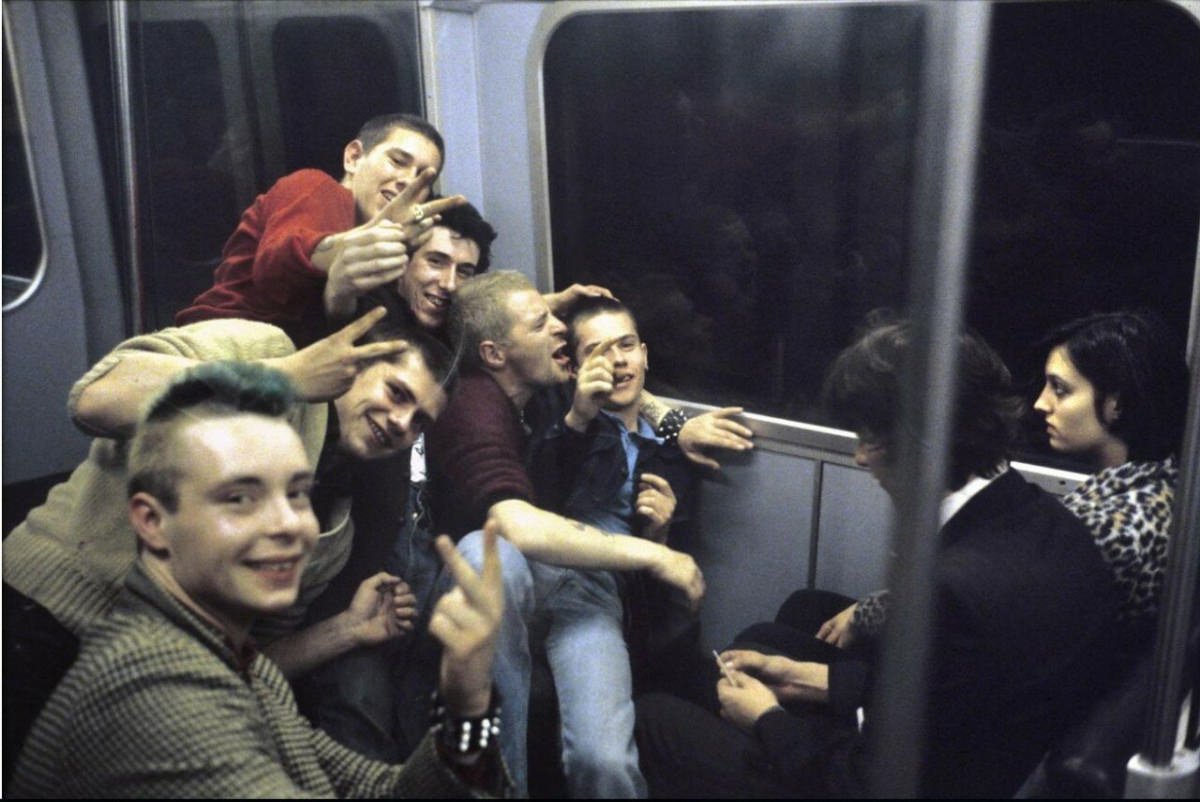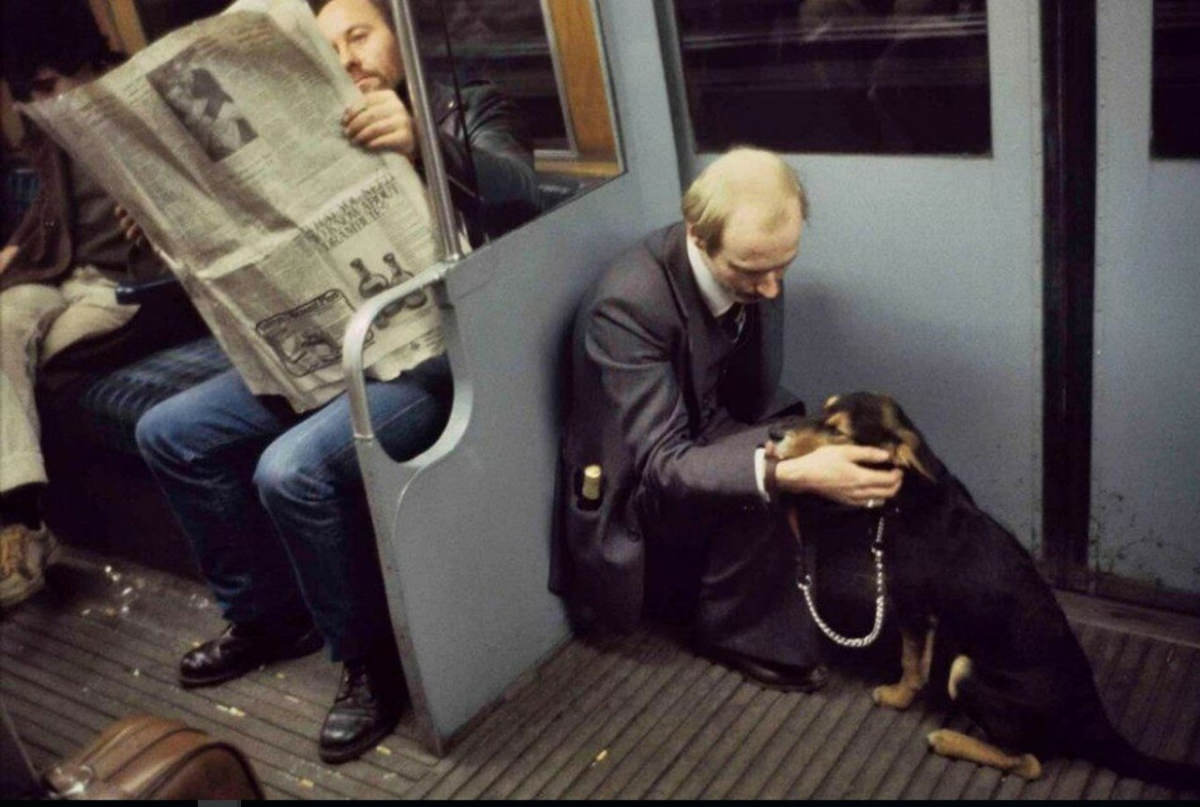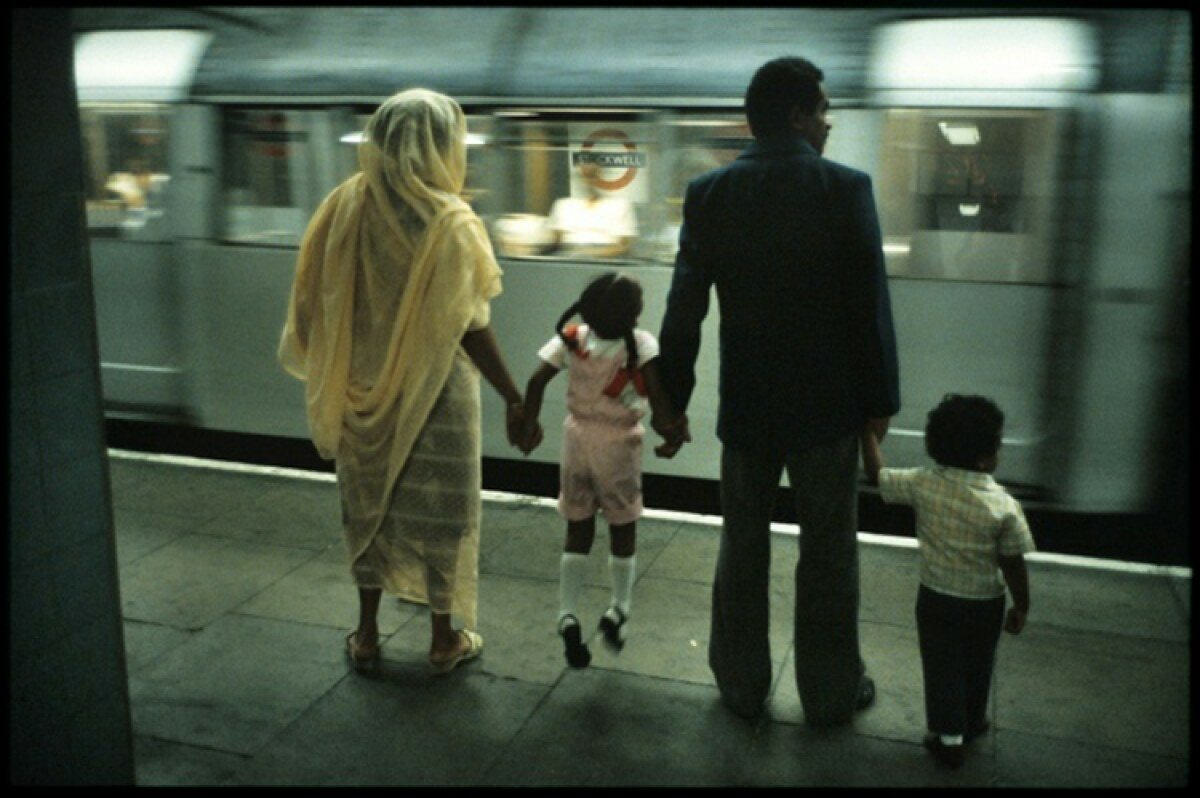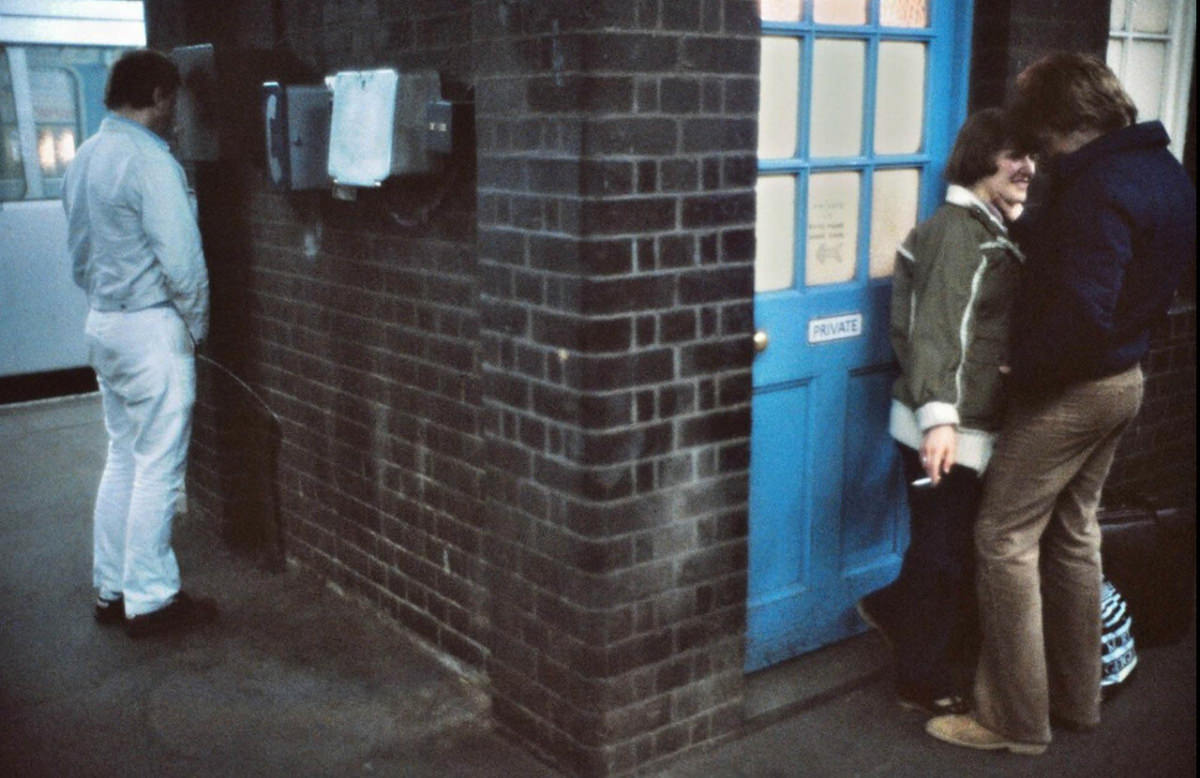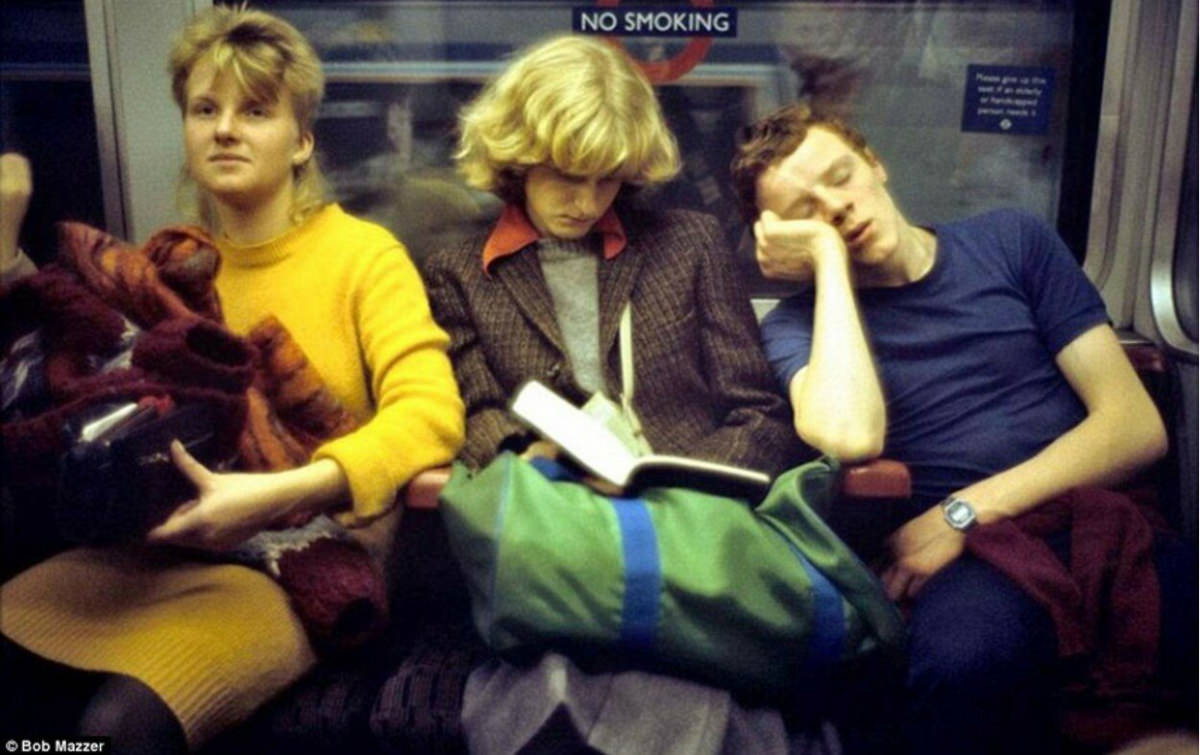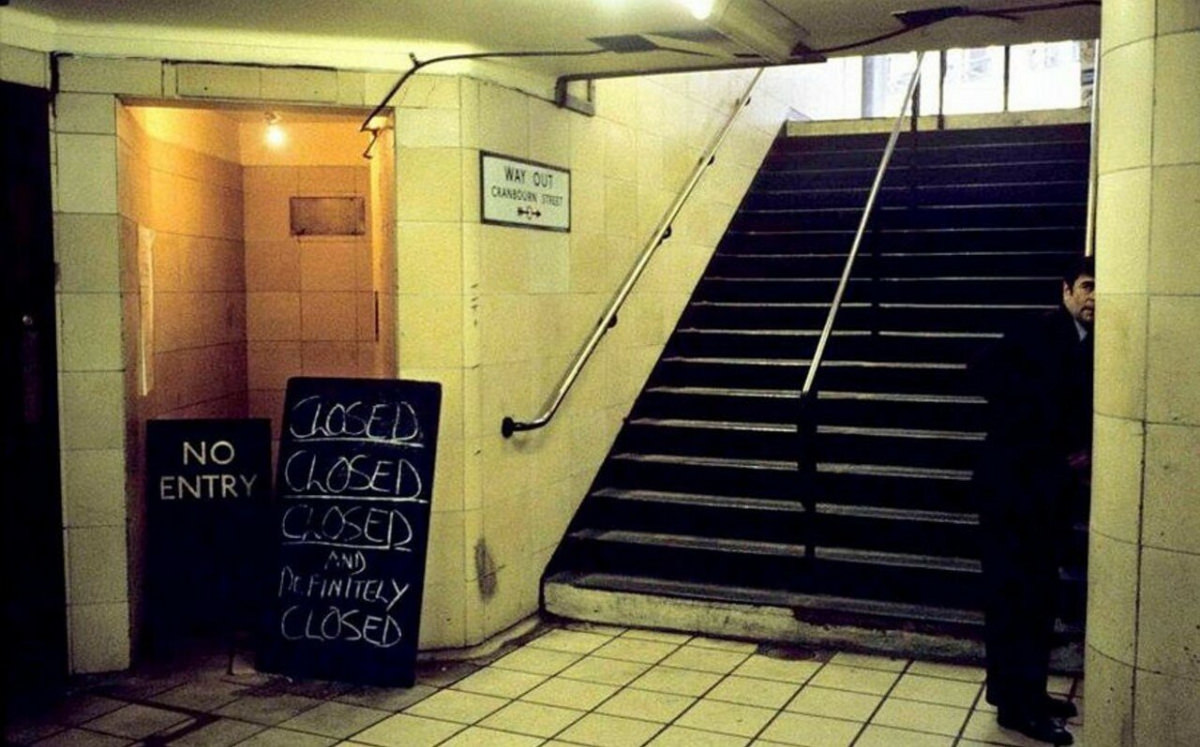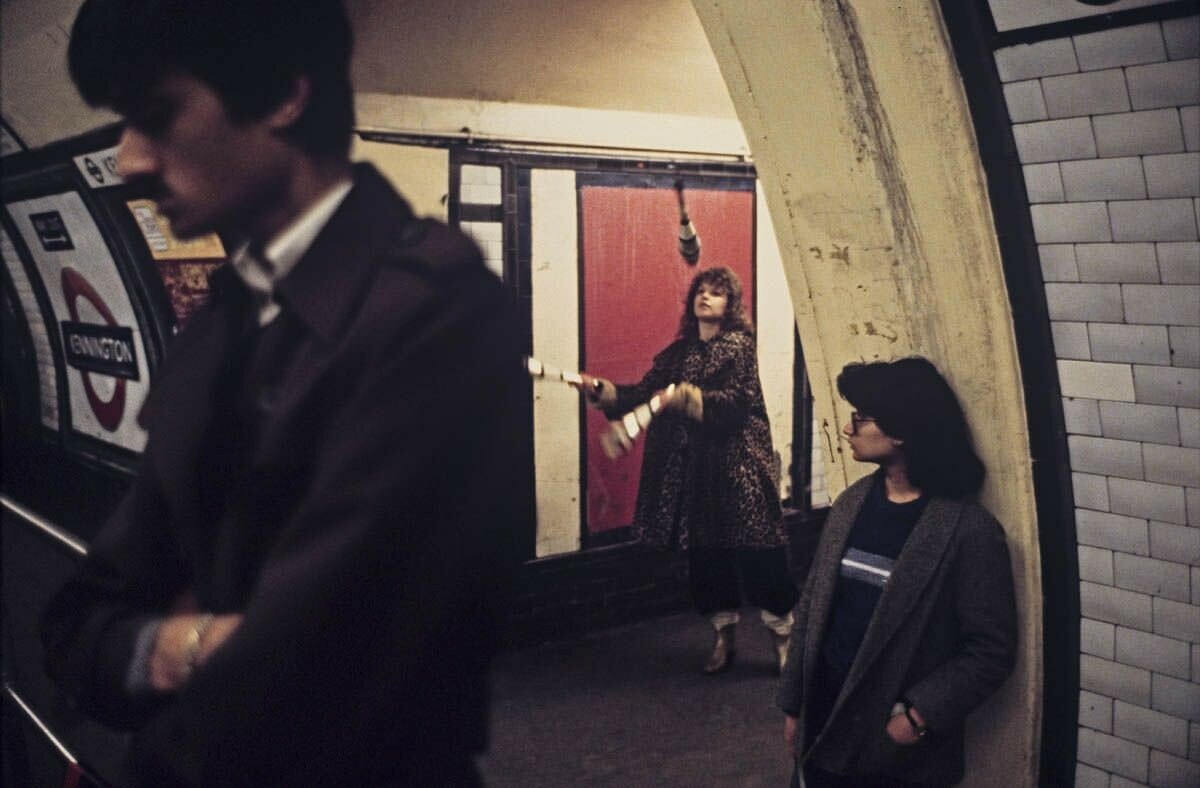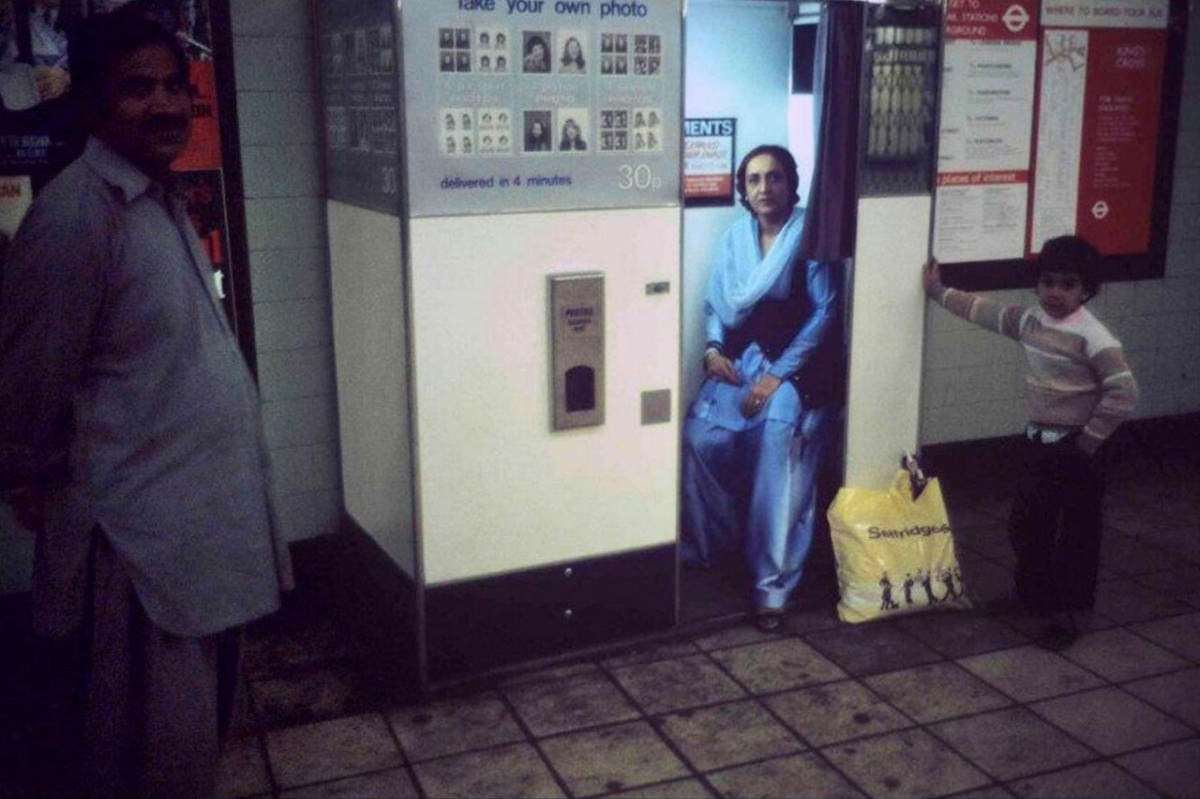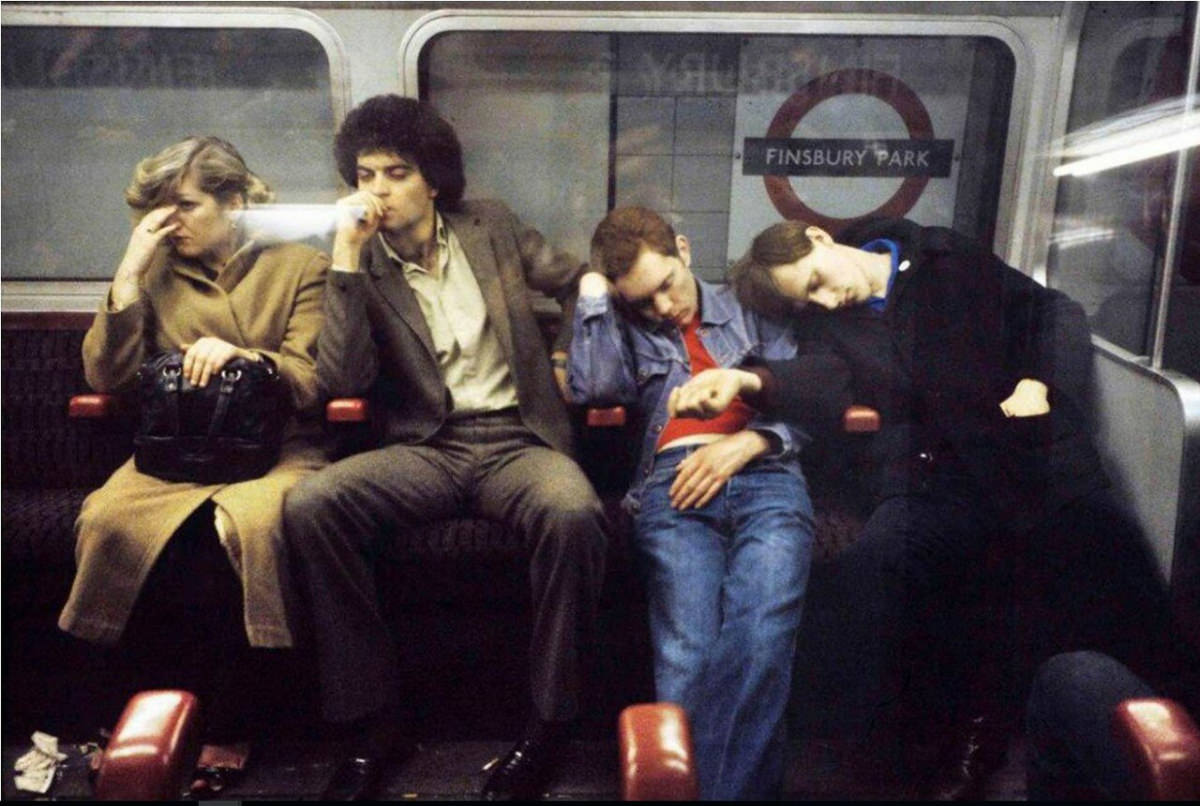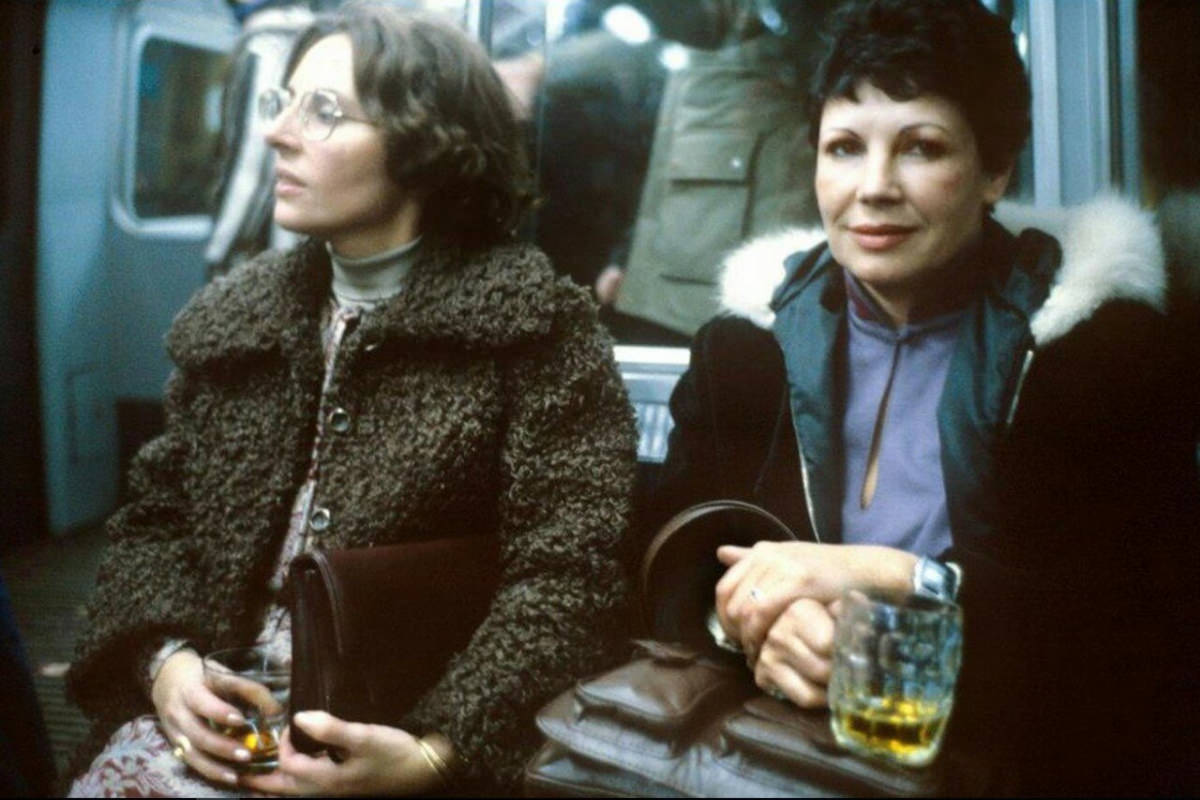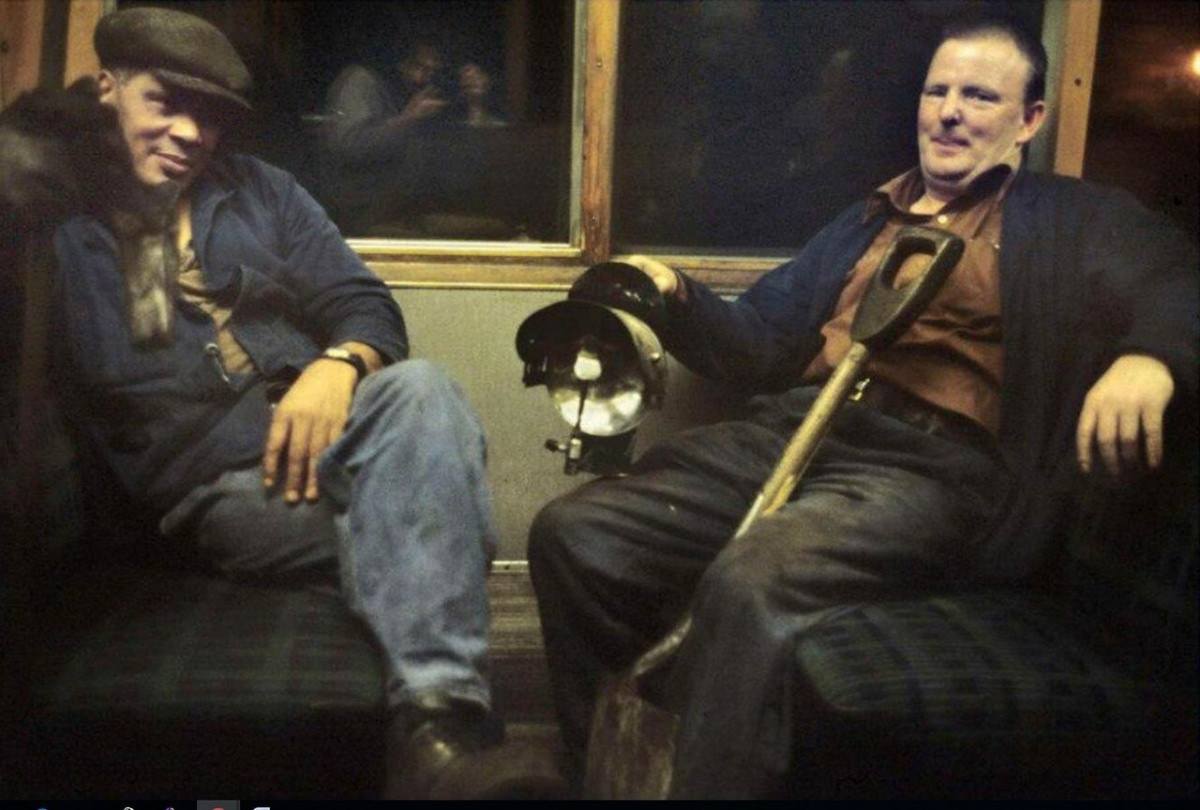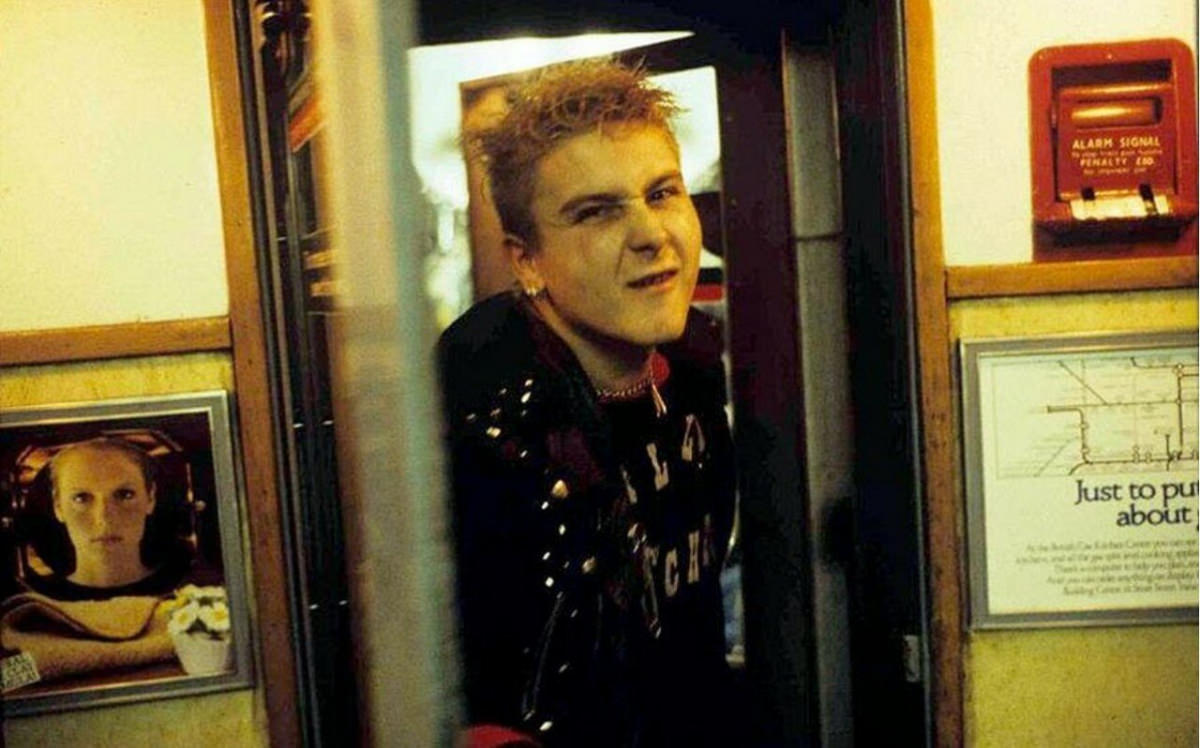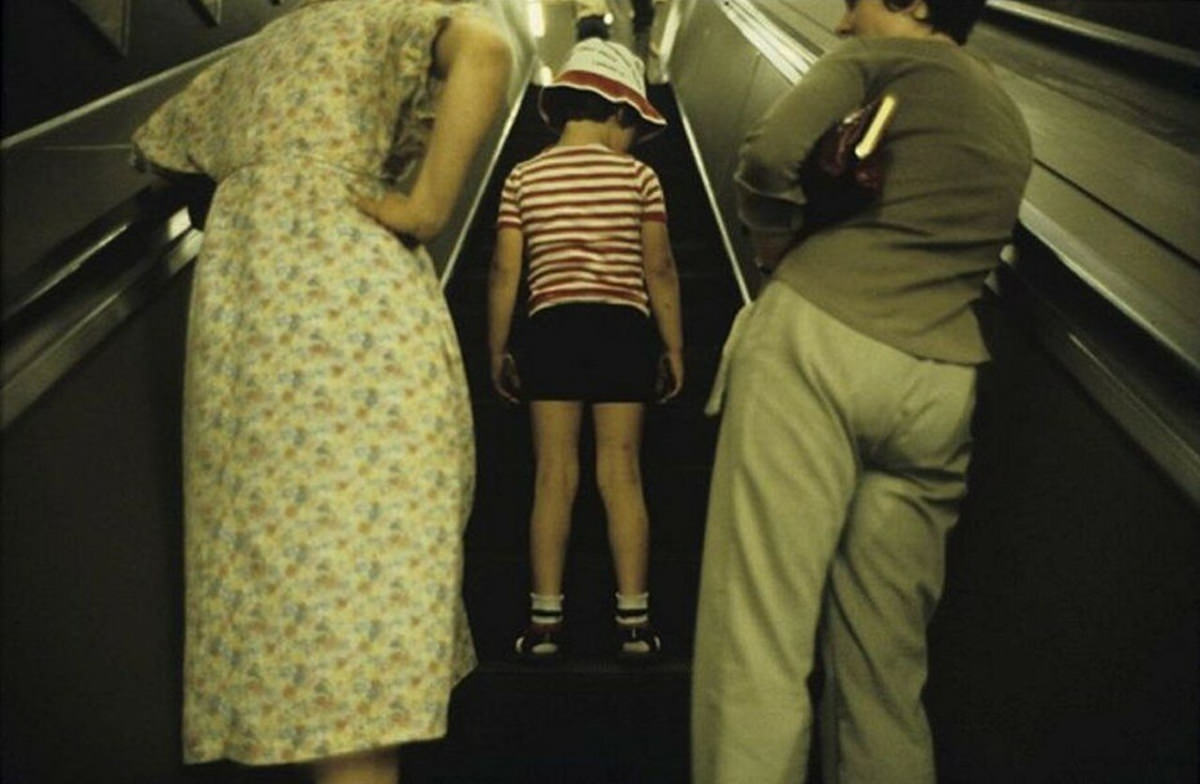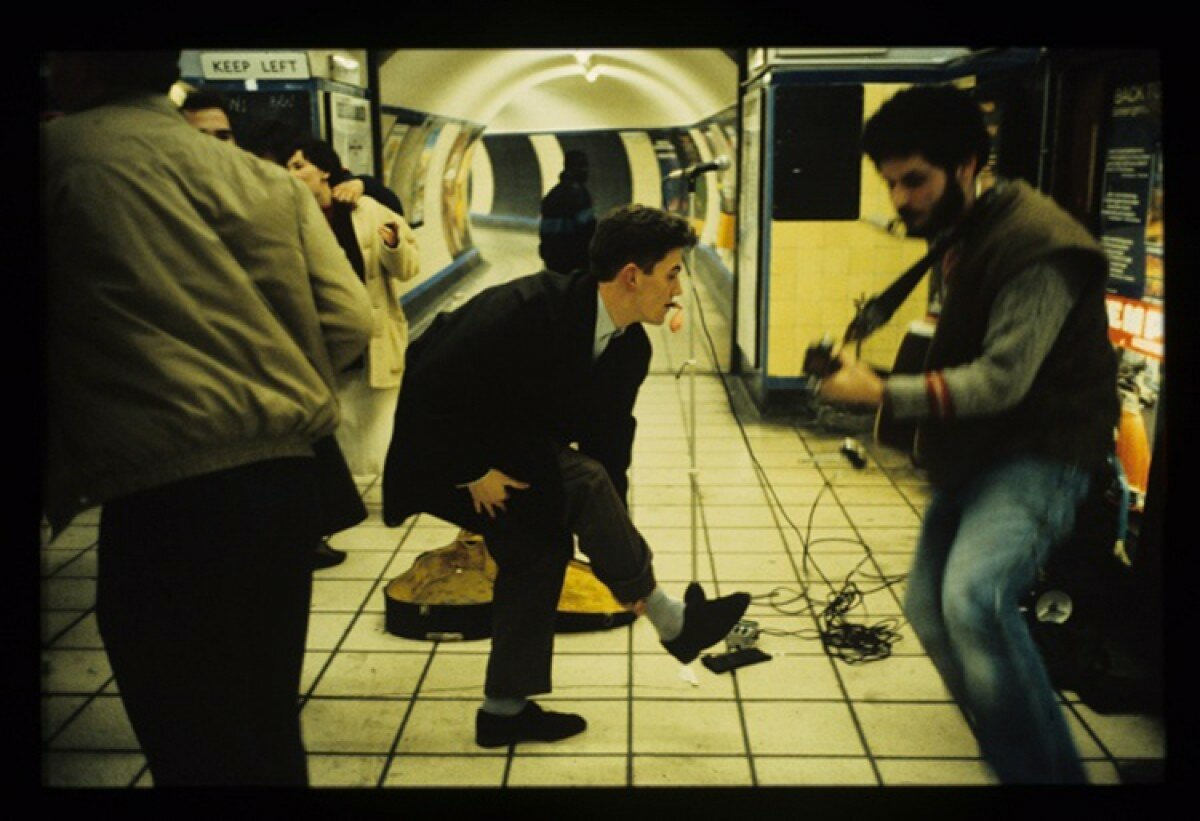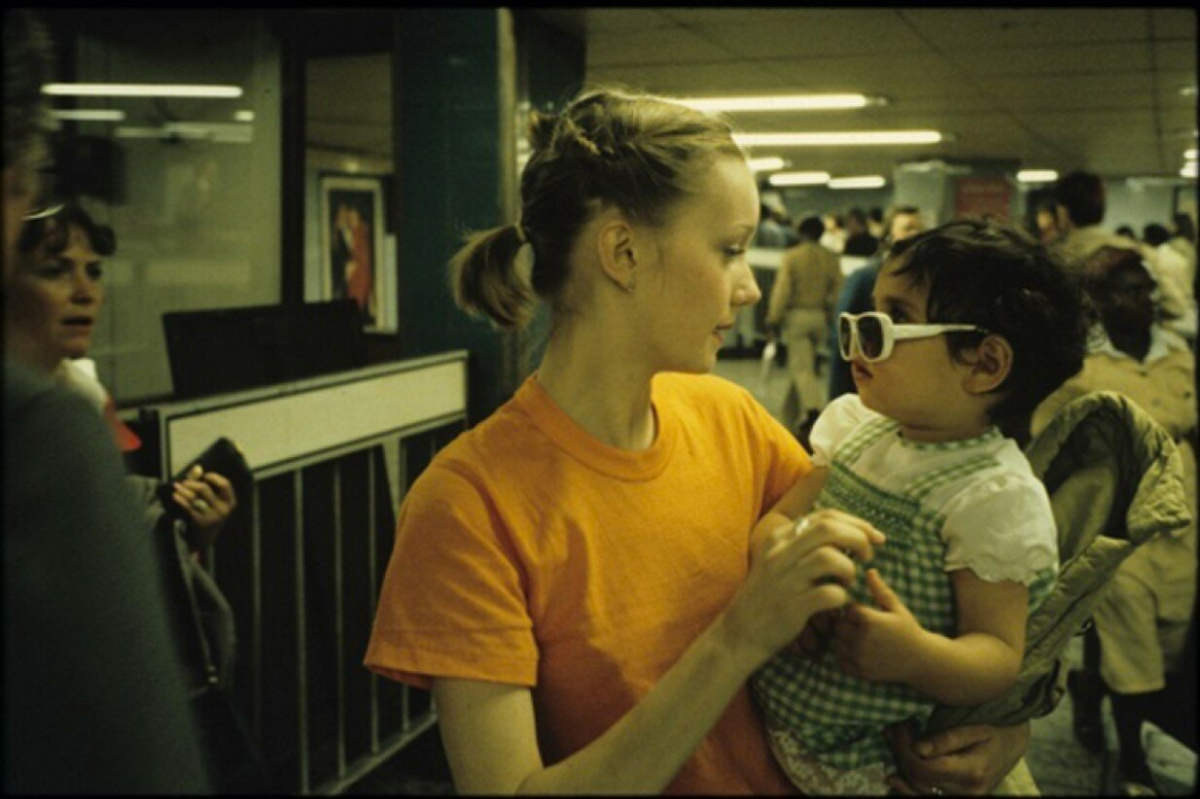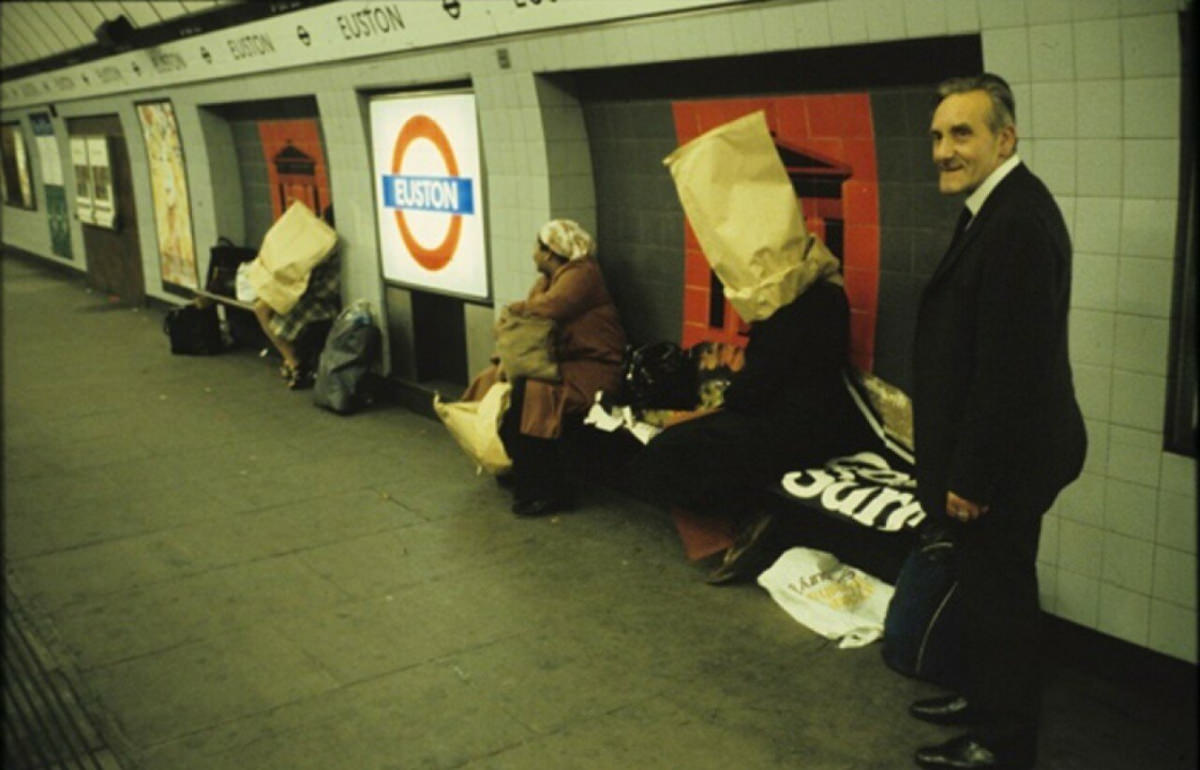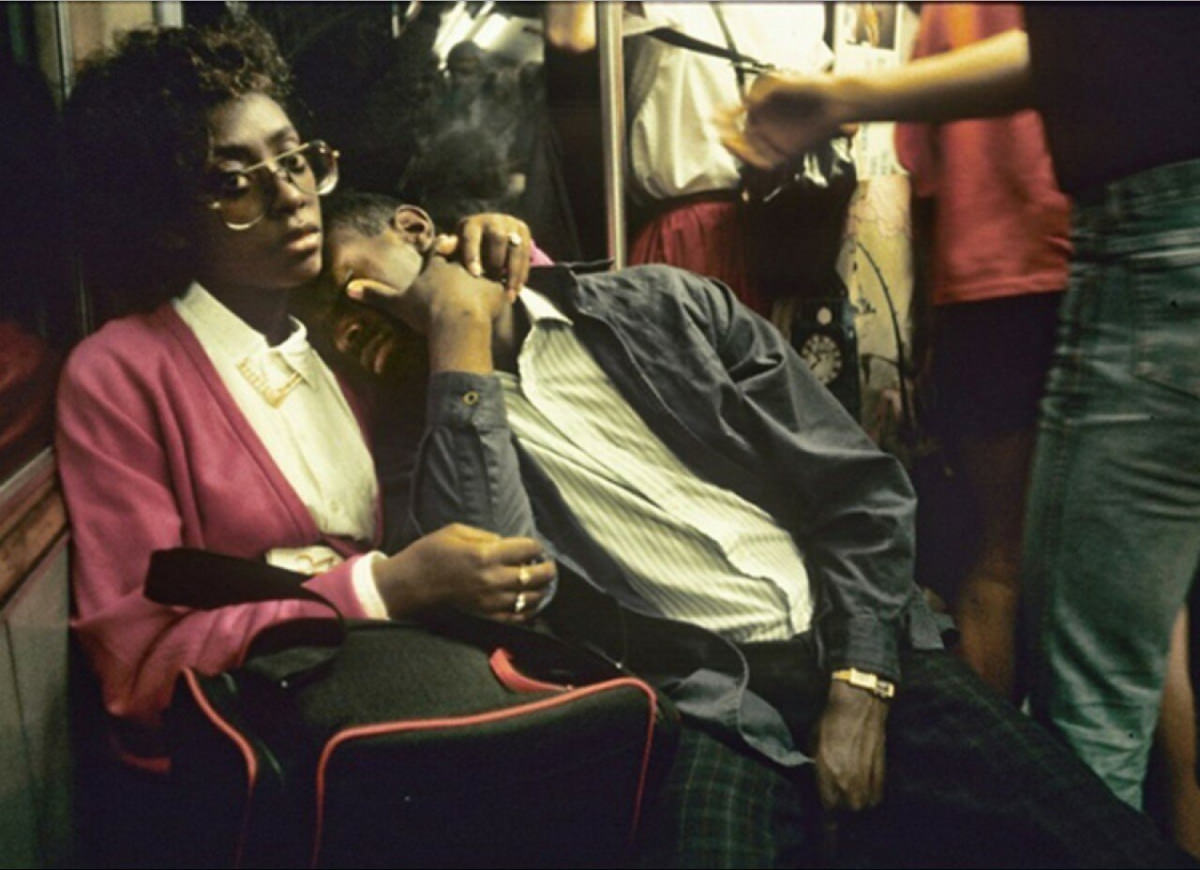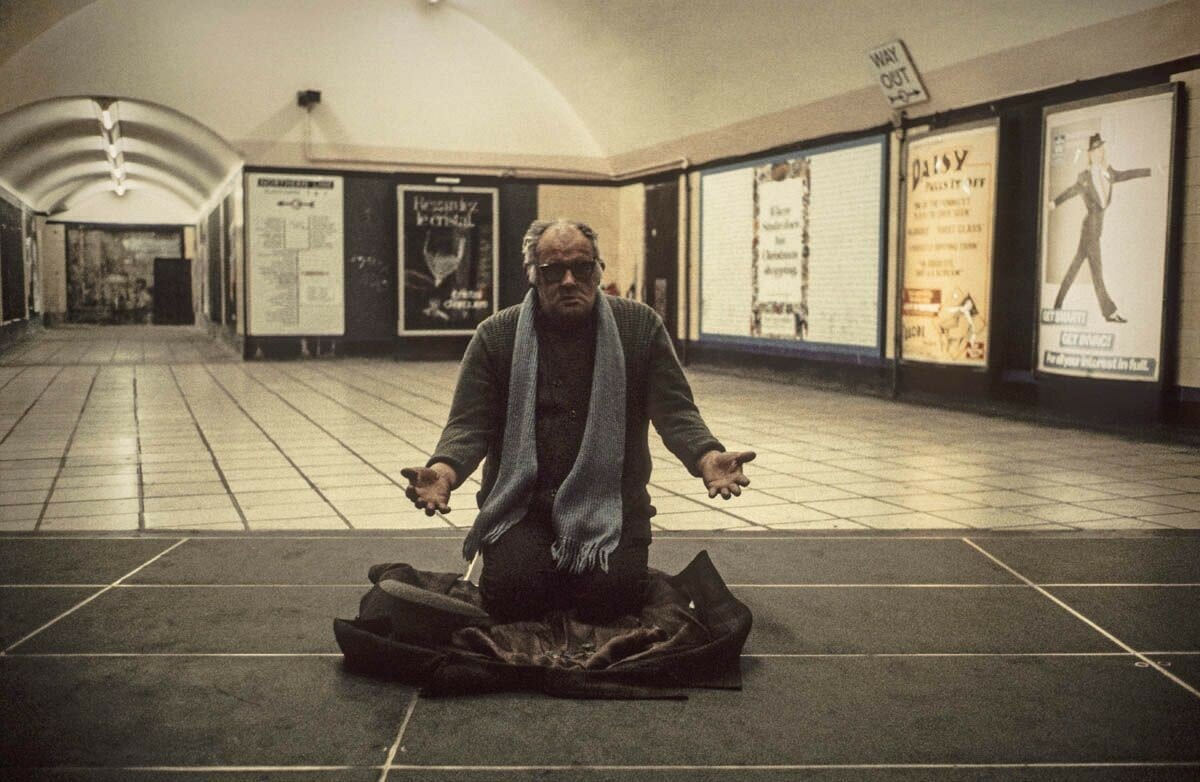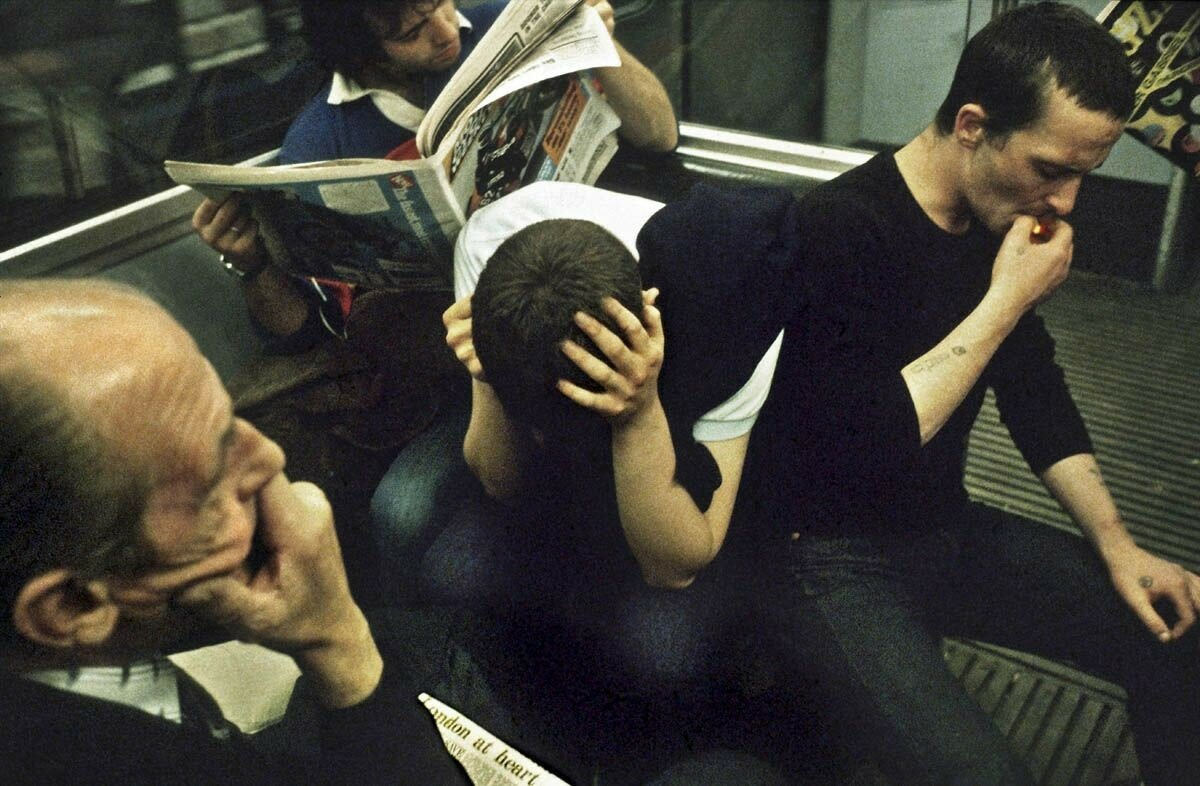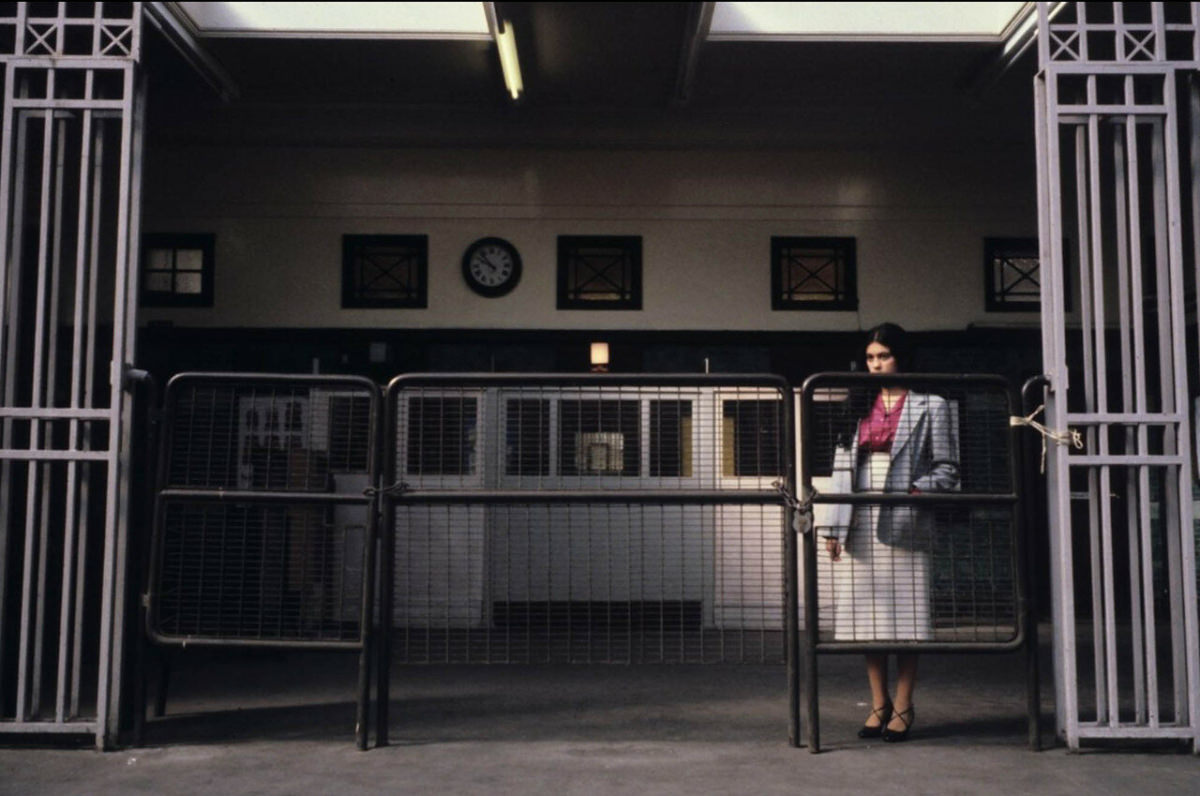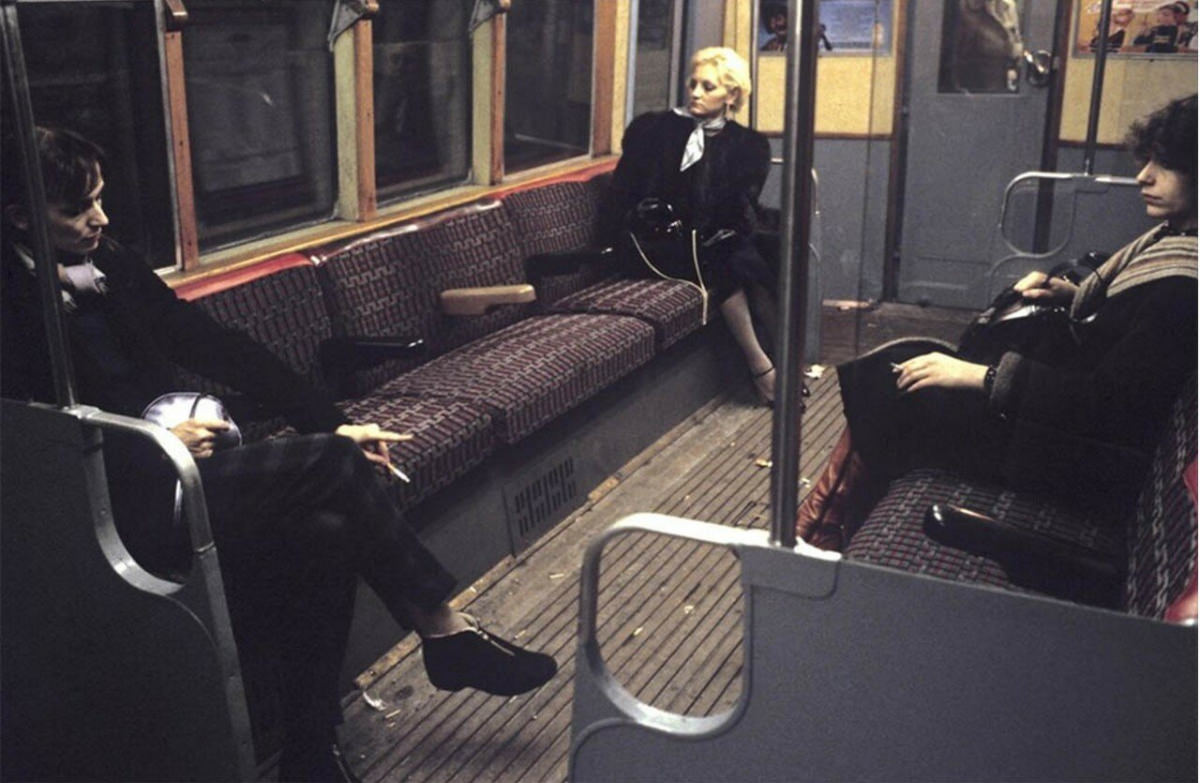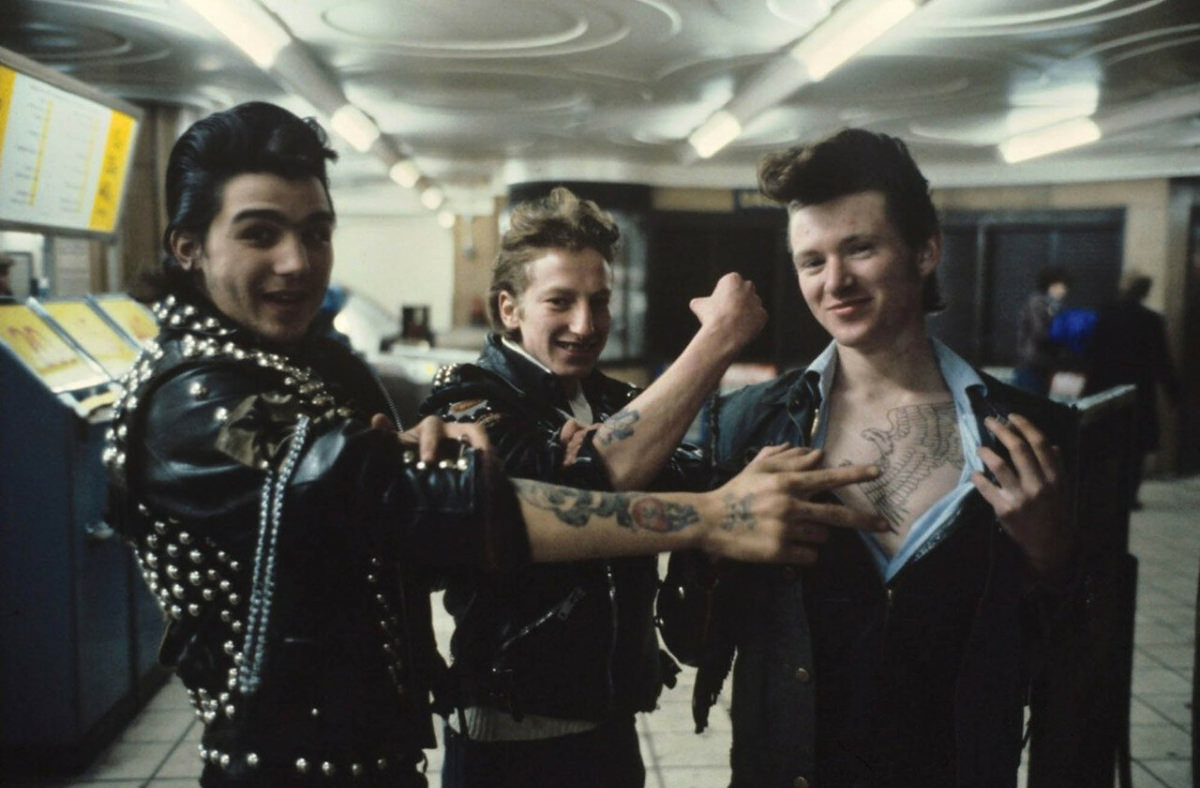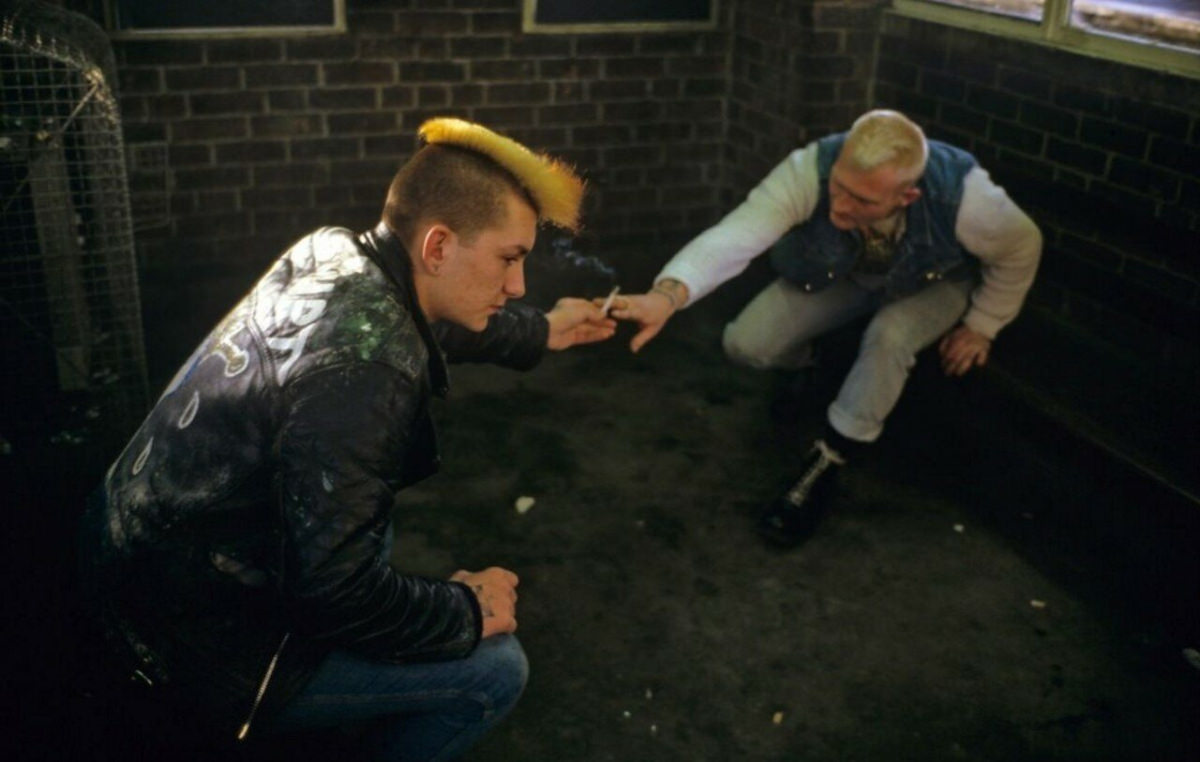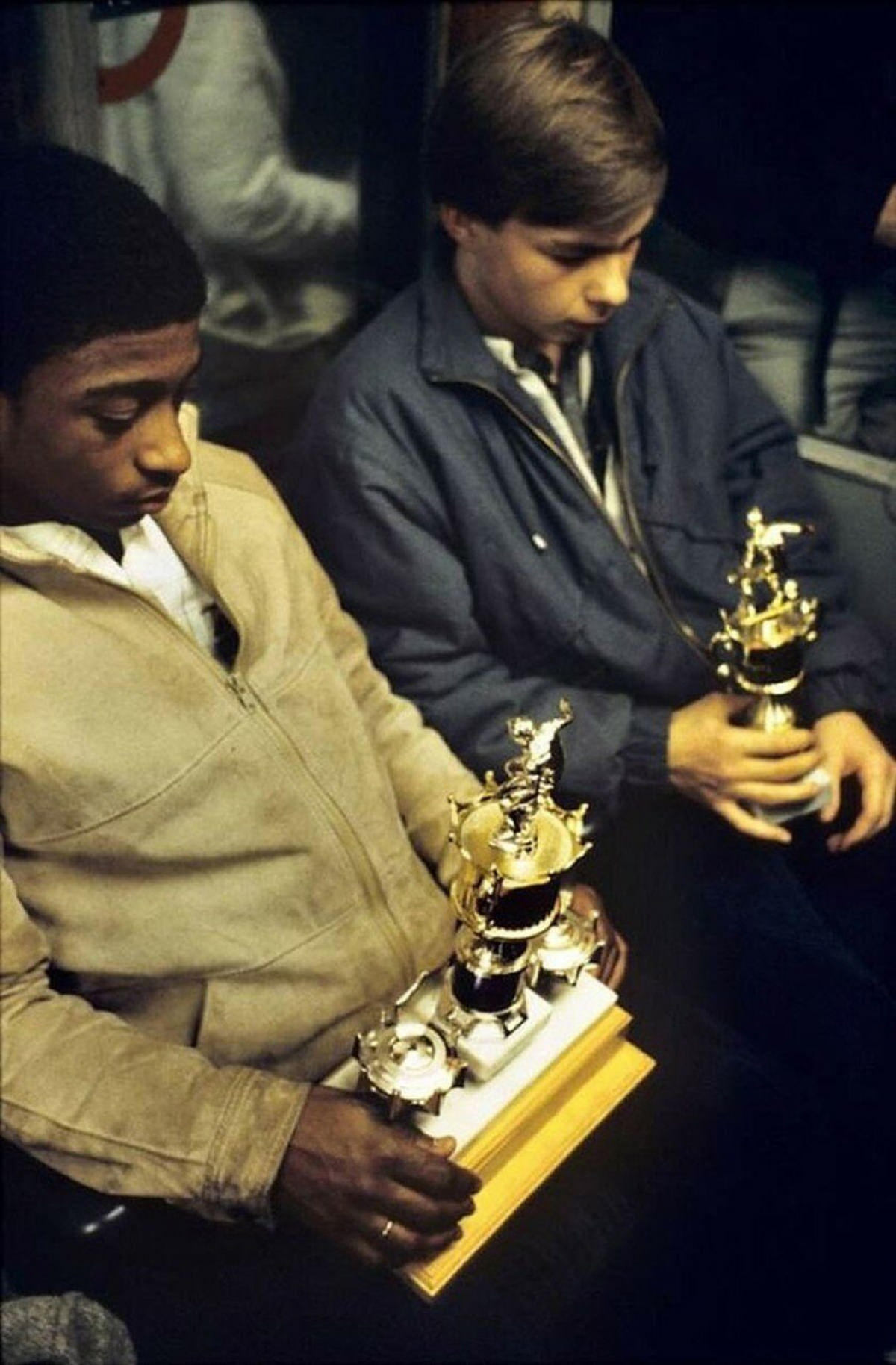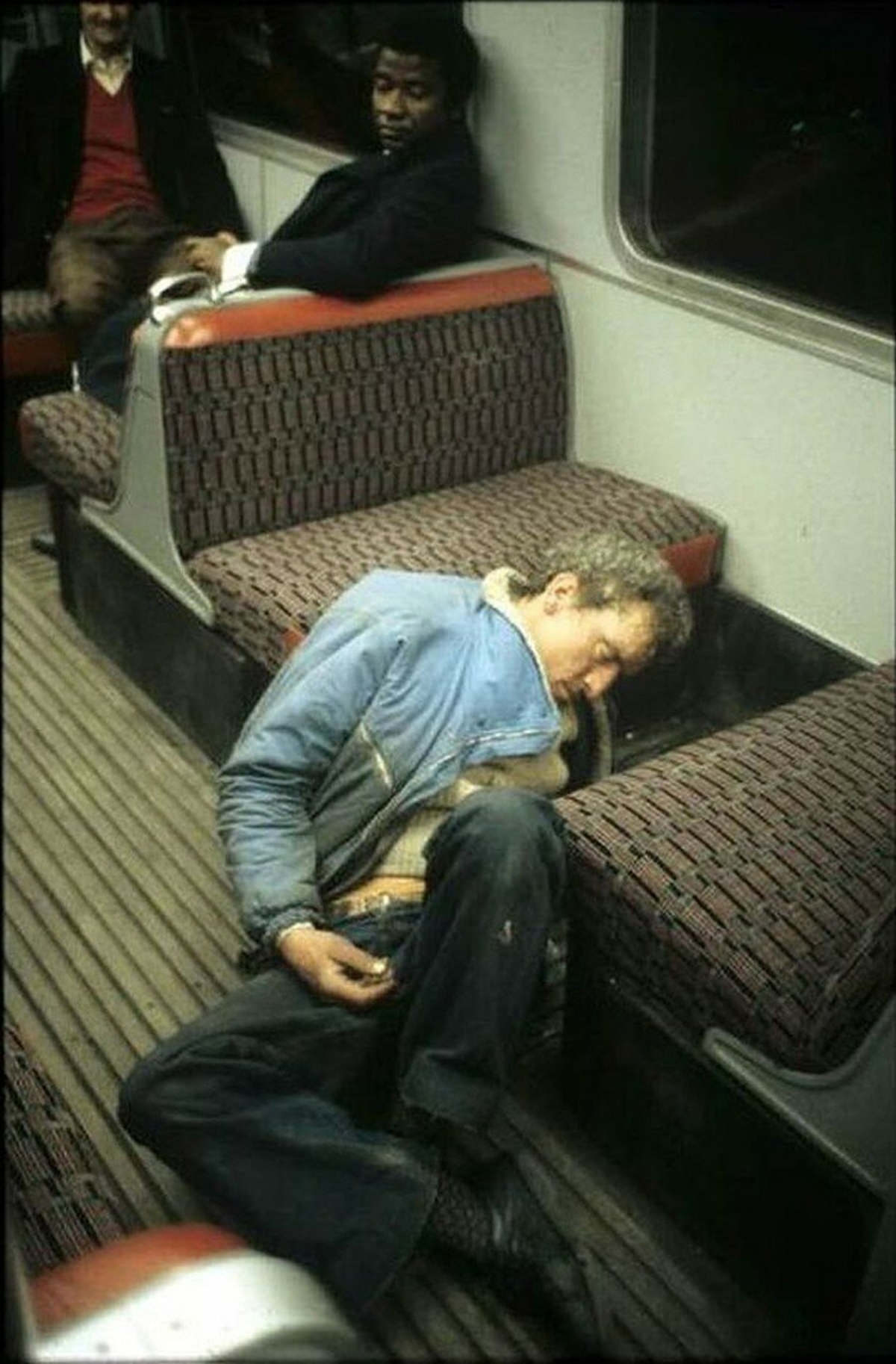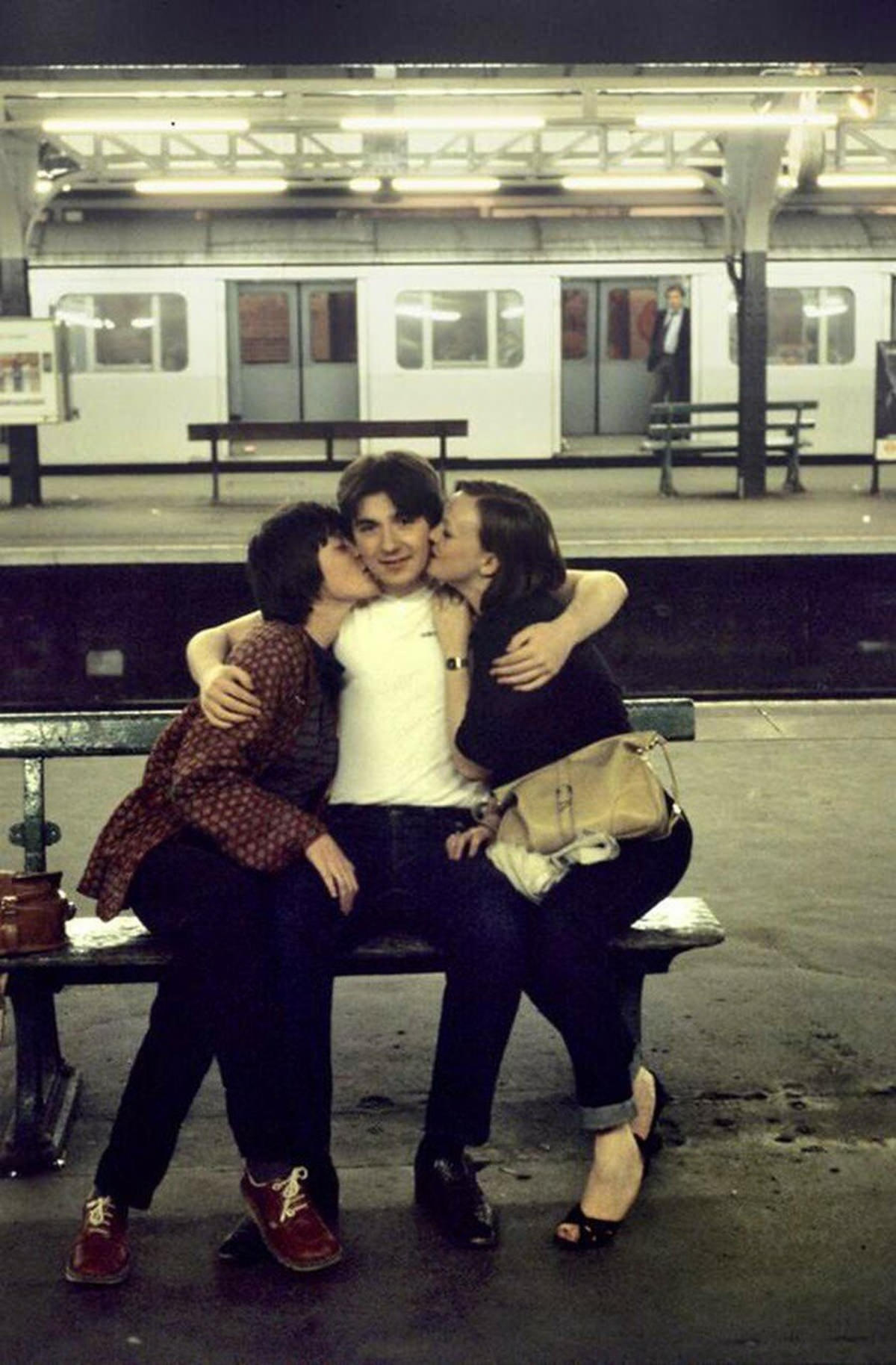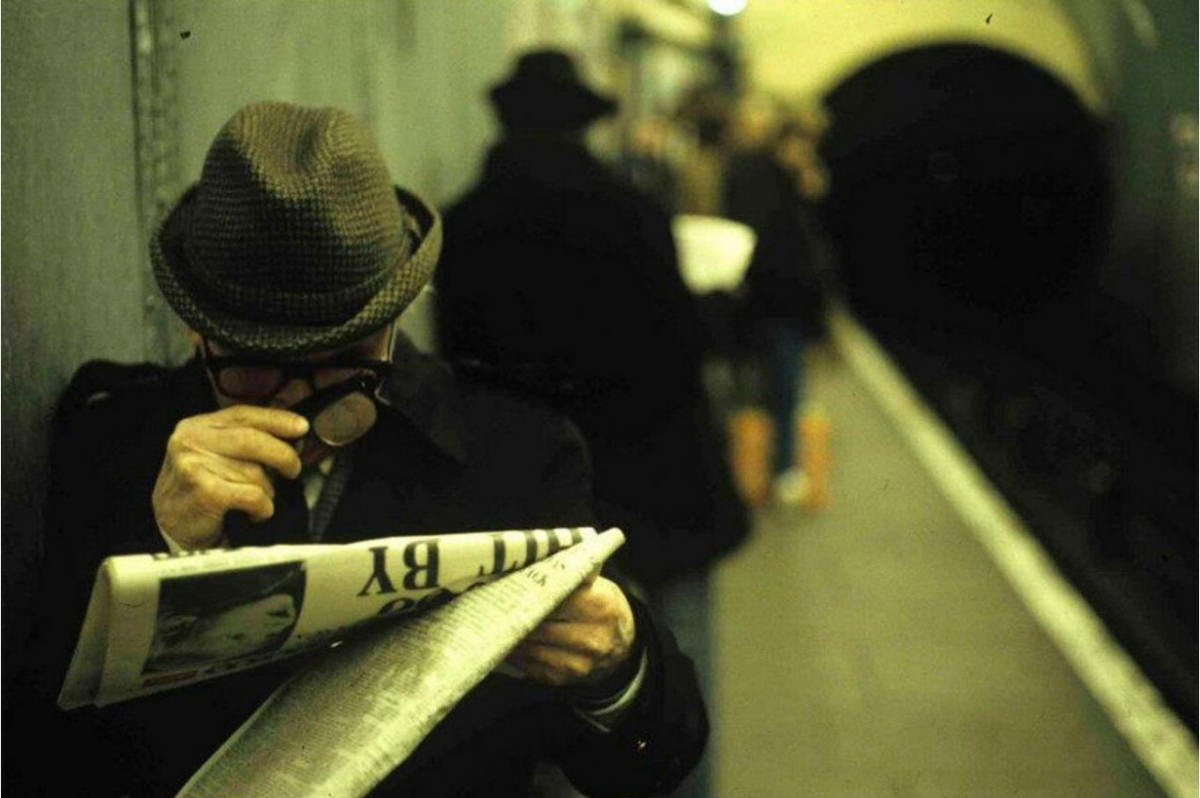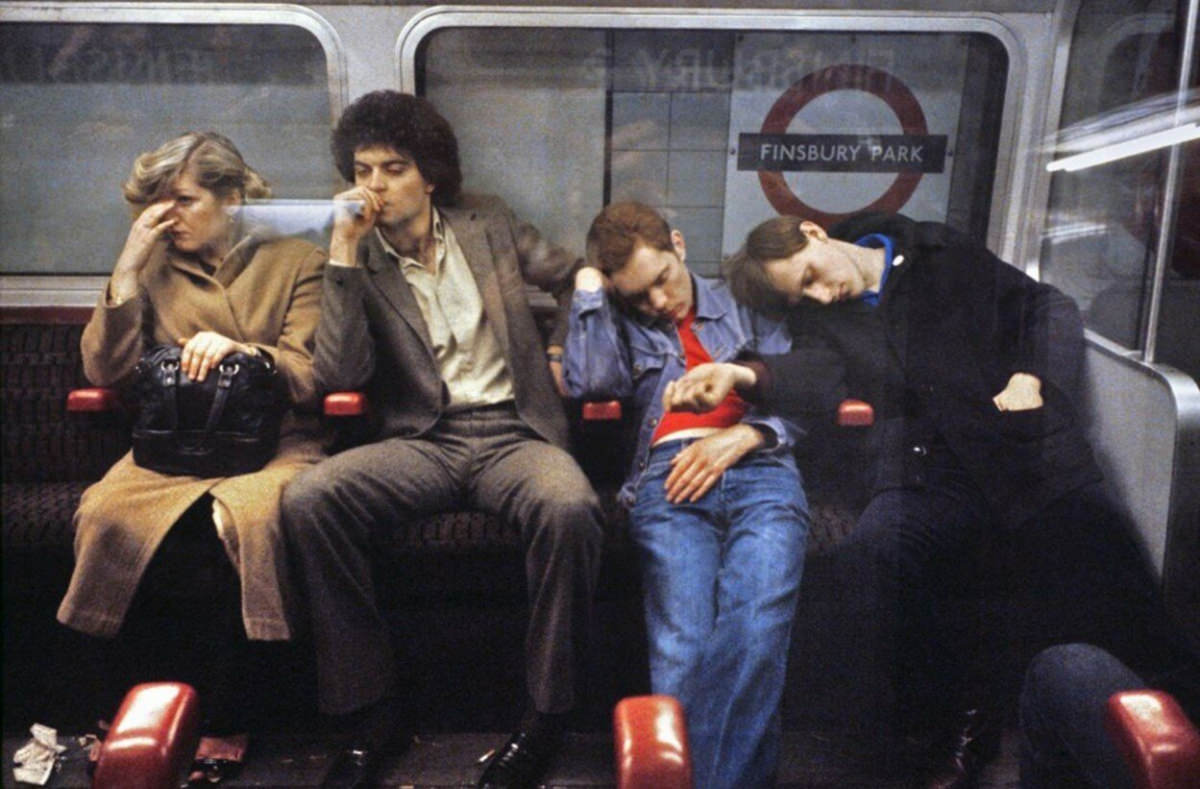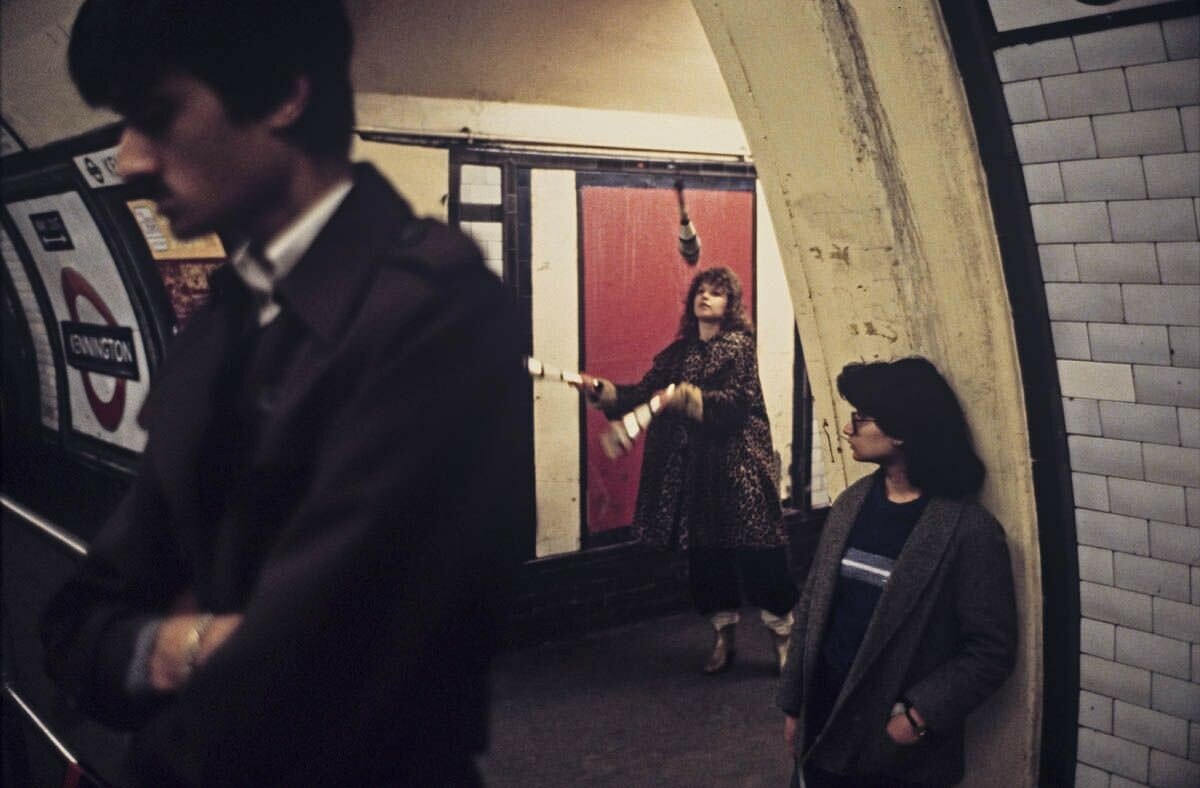In the 1970s and 1980s, the London Underground was a raw, unfiltered reflection of the city itself. For two decades, photographer Bob Mazzer traveled the network, using his camera to document the unique world he encountered in the tunnels and carriages. His work captured the gritty and dynamic character of the Tube during this era.
The passengers were a diverse mix of Londoners, commuters, and tourists, and the carriages served as a stage for a wide range of human interactions. Punks with spiked hair and leather jackets shared space with city workers in suits. Groups of friends would be loud and rowdy, while couples engaged in passionate embraces, indifferent to the other travelers. It was common to see people drinking beer or carrying musical instruments, like a man with a guitar and an amplifier strapped to his back. These scenes created a vibrant and often unpredictable social atmosphere.
The physical environment of the Tube had a distinct character. The train carriages, including the 1972 and 1973 Tube stock introduced during this period, featured moquette fabric seats in bold geometric patterns. Many stations retained their classic designs, with unique tiling patterns created by artist Leslie Green. Advertisements inside the trains and on the station platforms were printed on paper posters, creating a layered collage of consumer culture and public information.
Read more
Until 1984, smoking was permitted in designated smoking carriages on the trains. The smell of tobacco smoke was a regular part of the journey for many commuters. This practice was a frequent point of contention and was gradually phased out, first on deep-level tube lines and then across the entire network following a major disaster.
This period saw significant changes to the Underground system. In 1979, a new line, the Jubilee line, was opened to serve parts of central London. It was named in honor of Queen Elizabeth II’s Silver Jubilee, which had taken place two years earlier.
A defining event of the era was the King’s Cross fire on November 18, 1987. A fire started under a wooden escalator, quickly erupting into a massive blaze that killed 31 people. The disaster exposed serious safety flaws in the aging system and led to a complete overhaul of safety procedures. Wooden escalators were replaced, and a total smoking ban was implemented across the entire Underground network.


